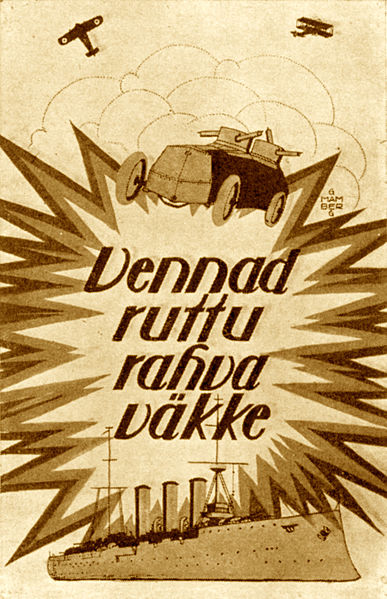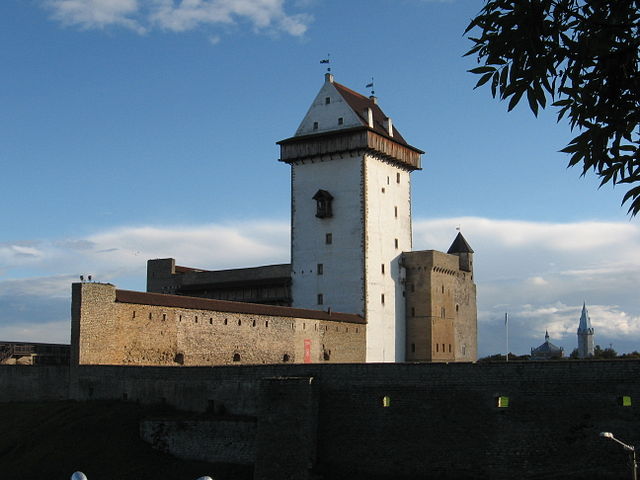Estonian War of Independence
The Estonian War of Independence, also known as the Estonian Liberation War, was a defensive campaign of the Estonian Army and its allies, most notably the United Kingdom, against the Soviet Russian westward offensive of 1918–1919 and the 1919 aggression of the pro–German Baltische Landeswehr. The campaign was the struggle of the newly established democratic nation of Estonia for independence in the aftermath of World War I. It resulted in a victory for Estonia and was concluded in the 1920 Treaty of Tartu.
"Brothers, Hurry to Join the Nation's Army!" Estonian Army Recruiting poster in 1918
General Laidoner during the War of Independence
Officers of Estonian armoured train nr 1 in December 1918
The first celebration of Estonian Independence Day in Tallinn on 24 February 1919
Estonia, officially the Republic of Estonia, is a country by the Baltic Sea in Northern Europe. It is bordered to the north by the Gulf of Finland across from Finland, to the west by the sea across from Sweden, to the south by Latvia, and to the east by Lake Peipus and Russia. The territory of Estonia consists of the mainland, the larger islands of Saaremaa and Hiiumaa, and over 2,300 other islands and islets on the eastern coast of the Baltic Sea, covering a total area of 45,335 square kilometres (17,504 sq mi). Tallinn, the capital city, and Tartu are the two largest urban areas of the country. The Estonian language is the indigenous and official language of Estonia, and it is the first language of the majority of the country's population of 1.4 million.
Bronze Age stone-cist graves in north Estonia
Old Town of Tallinn
Narva fortress.
"Academia Dorpatensis" (now University of Tartu) was founded in 1632 by King Gustavus as the second university in the kingdom of Sweden. After the king's death it became known as "Academia Gustaviana".








